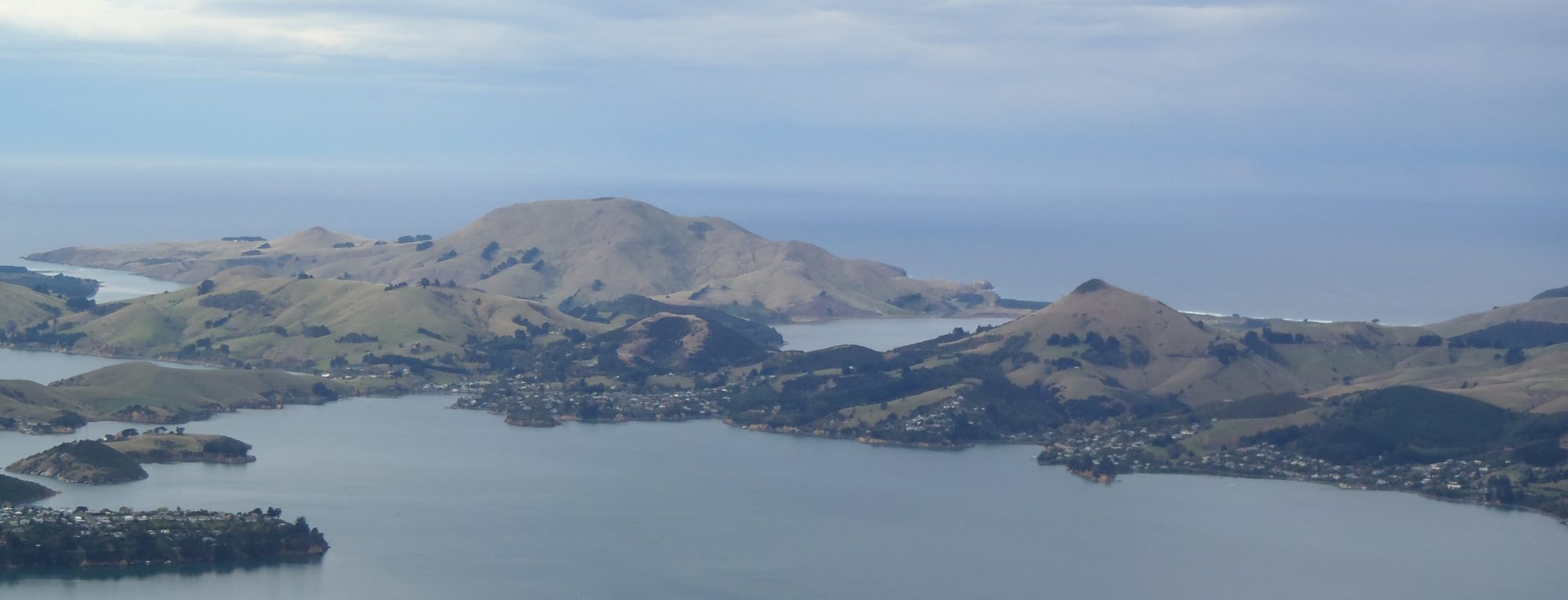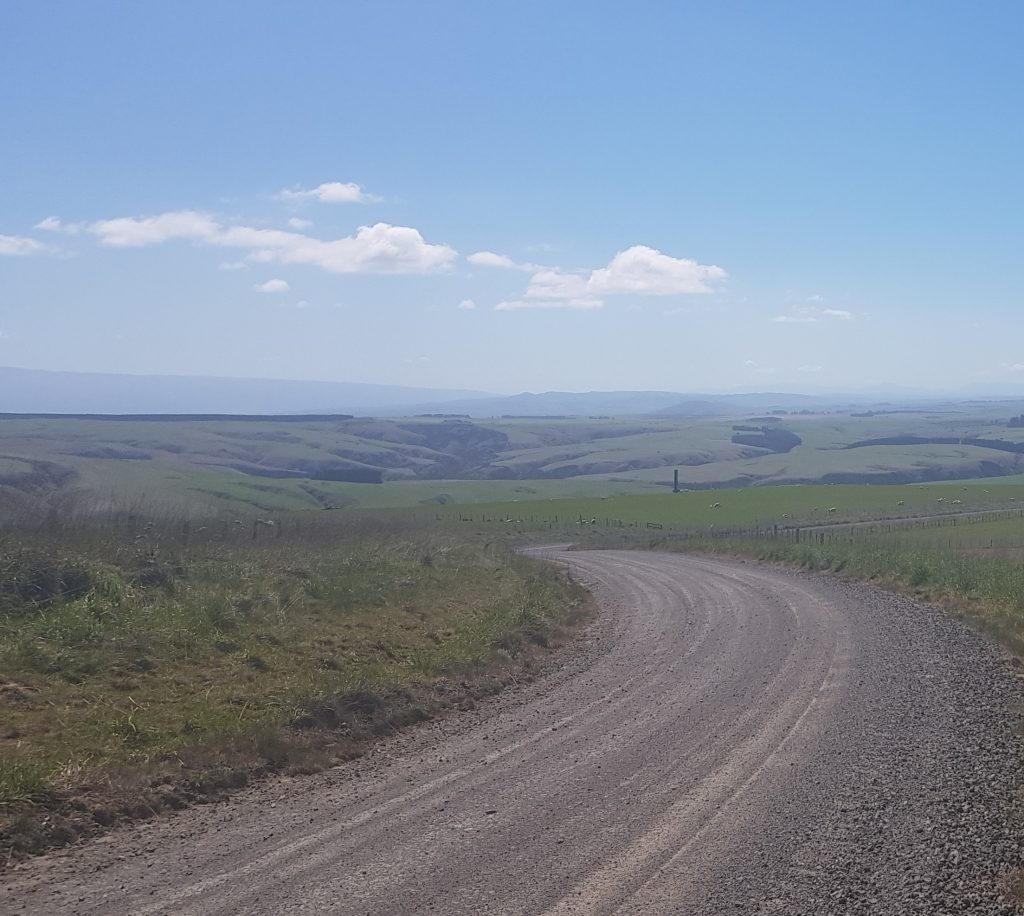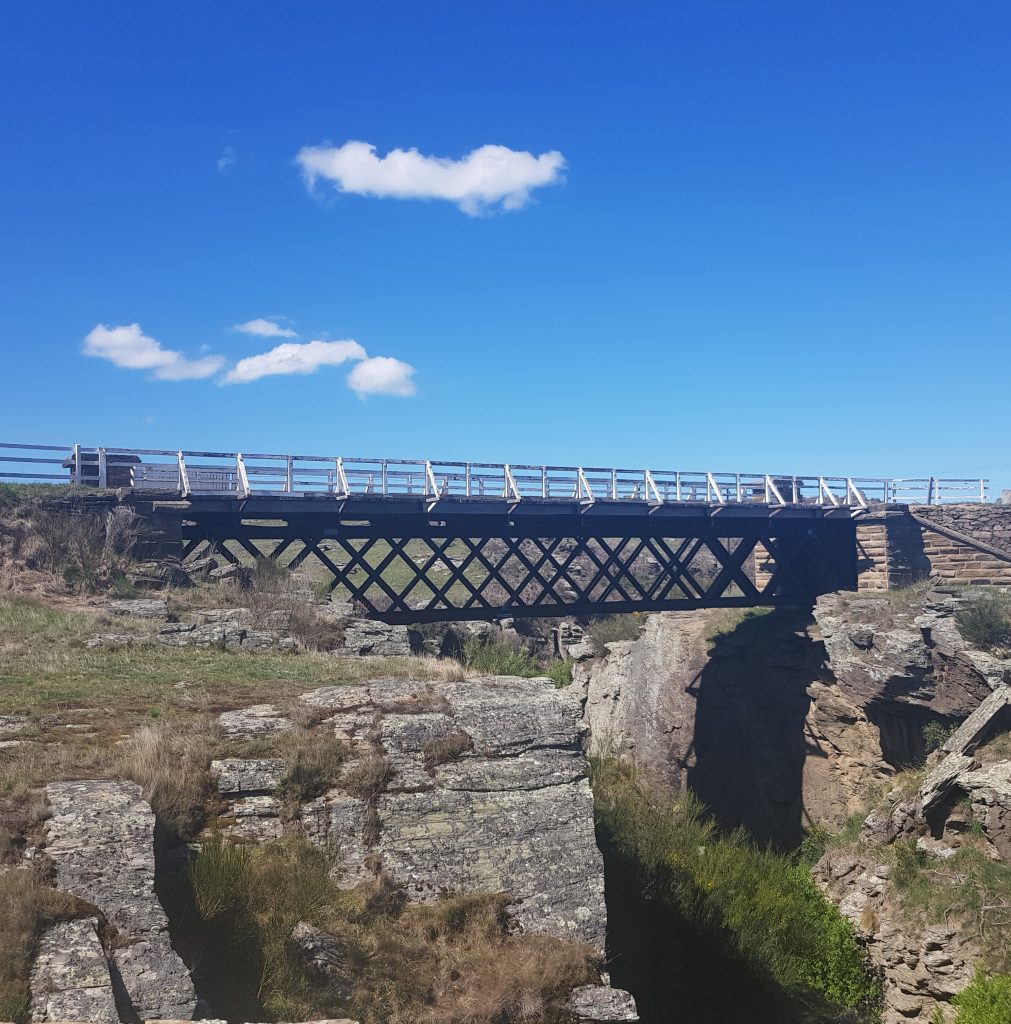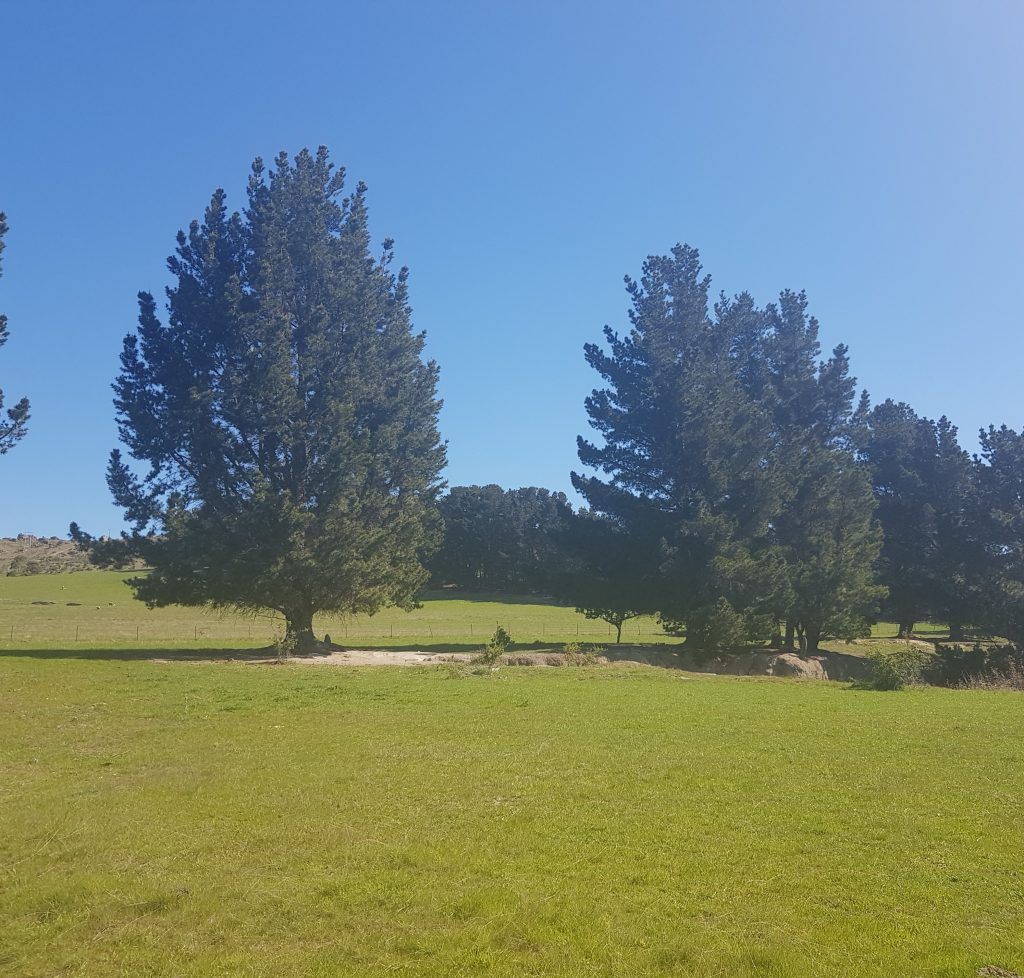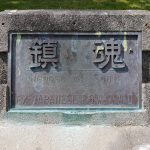A day off, bright sun, no pressing responsibilities? Must be time for an adventure!
I planned accordingly, and with haste. Destination: Pukerangi, a stop on the Taieri Gorge Railway, though I would be taking the back roads – not possessing a train!
We set off, past Outram Glen, up George King Memorial Drive, following the route I once took to Hindon. I strategically refrained from mentioning my history of break downs in the area and instead assigned my companion the responsibility of interpreting my notes.
We ran into our first problem when we discovered my planned route included a private road through Barewood Station, part of a historic run dating back to the 1850s and containing archaeological remnants from both railway and gold mining activities.
With a last look back at road we must forsake, we turned back, plotting a new path to our destination.
Since our revised route approached Pukerangi from the opposite direction, we were now following my treasure trail (taken from here) in reverse order as we turned on to Pukerangi Road just before State Highway 87 entered Sutton – so much for taking the back route!
Our first point of reference was the “Matarae Camp Siding”, a stop on the Otago Central Railway which was opened in 1914 but now has only a single small shelter left to show that it ever existed.
It’s an otherwise very desolate spot set among the rolling hills and rocky outcrops, but once upon a time it would have looked quite different. The surrounding area was used for annual military camps from 1913 (and in that first year horses provided the transport of equipment for the 4km from the next nearest station).
The station was closed in 1960.

Hearing a crunch as I entered the building, I discovered I had unwittingly stepped on the dessicated corpse of some small animal. In fact, further inspection showed that there were quite a number of these corpses strewn about the floor in various states of decay. Not keen to star in an Otago remake of The Hills Have Eyes, I backed out quickly.
Our guide also directed us to check out a couple of pre-European Maori rock shelters located nearby. Though we were helpfully provided with a map, I wasn’t sure whether I’d located the correct rocks – though at least one looked like it could be used as a shelter in a pinch!
At least the road/rail bridge over Sutton Stream was easy to find. This one isn’t quite as nerve-wracking as the one at Hindon, but at 18m above the water still feels a little precarious!
Thanks to taking our treasure trail in the wrong direction, we missed our next three objectives before passing over Castle Hill and thence into Pukerangi, where there was a group of macrocarpa trees sheltering a small recreation area.
Beyond the trees was the only building, Pukerangi station, opened in 1891. Conditions out here were harsh for the hardy farmers, railway workers and prospectors who eked out a living in a region described by one ODT correspondent as “a desolate waste of howling crag and rocky precipice”, through which building a railway was “the madcap idea of a group of motley-minded bipeds in a moment of mental aberration”.
That particular complaint was thanks to the floods of 1913, during which multiple slips blocked the line between here and Hindon. But there were other hazards to contend with too. In the winter of 1918 the locomotives reportedly had eight feet of snow to contend with, while dry periods brought the constant threat grass fires ignited by the sparks thrown up from the wheels.
A mechanical tablet station was added here in 1902 to contend with one further hazard of the single-track line – train collisions. This was after the accident at Hindon (mentioned in my previous blog), featuring the driver known as “Buggering Jack” (because he swore a lot!).
The idea of a tablet station was that a train driver entering this section of track would take a tablet, and then hand it over when exiting. While the tablet remained in their possession the section was closed to any other traffic, thus eliminating the possibility of a collision.
Well…unless one party happened to be riding a “velocipede”, as occurred in 1930 when Alexander Gray of Flat Stream was struck and killed by the evening train. It was a strange, sad incident, as poor Alexander should have easily made it home before the train passed, yet he seemed to not have got very far along the line at all before he was struck. The Pukerangi tablet porter had been with him all day and denied that he had been drinking, and the inquest speculated he may have suffered a medical event caused by an old chest wound he suffered in the First World War.

The station was finally closed in 1986, although it still sees occasional service as the terminus for day trips on the Taieri Gorge Railway.
Now leaving Pukerangi we kept our eyes peeled for the landmarks we’d missed on the way in. Our first was the “panorama” which our guide touted as a spectacular view over the Strath Taieri Valley and Middlemarch. We debated the merits of the view at every new bend and peak in the road, before finally settling on our favourite.
We paused to sate our eyes before continuing our journey, now searching for the old Matarae siding. Once known as “Sutton Tanks” it was opened in 1897 as a top-up stop for boiler-driven steam trains. A small wooden shelter was opened for passengers in 1901, and the stop was closed in 1985. It’s no mystery we missed it on the way in really, as the sign faces the tracks and all that remains of the building is a bare concrete pad.
Speaking of minor mysteries (or perhaps miner mysteries?), we finally located the Matarae sluicings, a 650m long gash in the landscape marking the site of a gold-working effort dating to the turn of the 20th century. Primed by this description, we were baffled at the fact we’d somehow missed it. Our answer soon came – the workings were all below ground level, effectively hidden from the casual sight-seer’s eye!
Unfortunately, I couldn’t find any information on who sluiced here or how well they did out of it, so this scar on the landscape seems to be all that’s left of the tale of this search for riches in which they moved the very earth.
The tale of our search however, ends in success, for with this we had checked off every site on our list. Now there was nothing else for it but to leave the howling crags and desolate precipices behind us for the comforts of civilisation that we as motley-minded bipeds tended to prefer.
References:
Unearthing the stories of historic Nenthorn By Pam Jones
Names & Opening & Closing Dates of Railway Stations in New Zealand 1863 to 2010 by Juliet Scoble
THE DEFENCE FORCES. Otago Daily Times, Issue 15701, 1 March 1913, Page 5
PUKERANGI. Otago Witness, Issue 3448, 13 April 1920, Page 27
THE WEATHER. Alexandra Herald and Central Otago Gazette, Issue 1141, 24 July 1918, Page 4
OTAGO CENTRAL RAILWAY LINE: ITS PERILS. Otago Daily Times, Issue 15847, 20 August 1913, Page 8
SURFACEMAN’S DEATH Evening Star, Issue 20416, 22 February 1930, Page 13
MIDDLEMARCH NOTES. Otago Daily Times, Issue 20967, 5 March 1930, Page 4
Images:
William Williams on a railway jigger, rabbit hunting in Otago. Williams, Edgar Richard, 1891-1983: Negatives, lantern slides, stereographs, colour transparencies, monochrome prints, photographic ephemera. Ref: 1/2-140564-G. Alexander Turnbull Library, Wellington, New Zealand. /records/23202872
